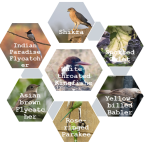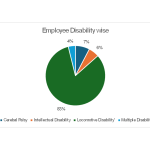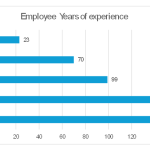Environment Social Governance (ESG) practices
Amar Seva Sangam has been working relentlessly to protect environment on all fronts thus ensuring sustainability of the organization. Conservation of energy, water, and excellent quality of air are the key focus areas, and a strong advocacy is built in the organization to ensure environment concern is realized at grass root level. The organization believes in the principles of “circular economy” and focuses on creating a closed-loop system where resources are reused, recycled, and regenerated. Every sustenance solution is designed for longevity, maintenance driven, recycle/reuse, efficiency in energy/water conservations and adopt a systematic approach with a long-term vision to sustain the environment. By adopting these principles, the institution aims to reduce environmental impact, conserve resources, and create a more sustainable and resilient organization. The organization is a collective representation of people coming with individual differences in thoughts, personalities, unique capabilities, and talent that they bring to work. Diversity is the collective mixture of employees’ differences and similarities including individual characteristics, values, beliefs, experiences, backgrounds, preferences, and behaviours. Amar Seva Sangam enabled diversity in the workplace simply means trying to employ a broad cross-section of people from different demographics. The institution has robust Governance framework that gives focus to the management to plan for future and a well-structured process and governance framework is in place to drive the operations. The following section described the various ESG initiatives over the decades that ensures protection of environment, and people thus ensuring significant savings of resources and cost while ensuring the health and safety of the people.
Environment Sustainability
ENERGY EFFICIENCY INITIATIVES
Solar Water Heating Systems
1. Solar Water heating systems installed since 2017 totalling to daily capacity of 4000 Litre capacity to meet hot water needs to Kitchen, Volunteers Quarters, two guest houses, two hostel and at Post Acute care centre for Spinal injured.
Impact:
- The energy saved every year is 2,89,000 units amounting to recurring saving of Rs. 26. Lakhs per annum. The Total cost saved Rs.1.81 Crores over the past 7 years.
- Carbon emission saved per year is 230 Tonnes. Total Carbon emission footprint realised is 1612 Tonnes over the past 7 years.


Solar Water Pumps
2. Solar Water Pumps are installed in our own wells using 7.5 KW Solar Water Pump since 2018 which pumps 54000 Litres per day for 5 hours.
Impact:
- Total Power unit saved is 6000 per annum and 30000 units in 5 years.
- Energy cost saved Rs.3 lakhs during the past 5 year.
- Total carbon emission footprint realised is 21 tonnes over the past 5 years.


Solar Power
3. Solar Power: We installed 110 KW Solar Power Plant in two phases against the requirement of 170 KW, since 2019 .to take care of the full power requirement of the campus. We consume 11000 units of Solar Power monthly and export excess power of 4000 units a month to the State Grid. The Total Cost funded by a Corporate Sponsor was Rs…. Lakhs
Impact:
- Total Solar Units generated is 594000 units that is equivalent to 66% of Total Consumption. The Total cost savings is Rs.53 Lakhs over the past 5 years.
- Total carbon footprint realised 475 tonnes over the past 5 years through use of Solar energy.


Biofuel: Kitchen uses Biofuel efficiently for cooling to induce heat to the steam cooking with use of Biofuel Briquettes, and local tree branches
Lighting: Number of Other energy efficient initiatives are taken in the organisation like,
- Water pumping during the daytime using Solar Energy
- 19 BDLC Fans, LED Lighting in campus
- 1200+ lighting points with LED lights
- 130 Street Lamps in LED, using Solar panels.
WATER CONSERVATION
Sewage Treatment Plant
Campus needs total water requirement of 262000 Litres which are obtained through multiple sources:

Impact:
- Water utilized is recycled by 23% with a Sewage Treatment Plant that generated 60000 Litres of water daily which are used to water the trees and plants in the campus
- The Sewage Treatment Plant (STP) used the human waste and Cow-dung to produce Methane energy that is used for One stove in the Kitchen.
- Rainwater harvesting is fully implemented in the campus.


Water aerators have been installed in the 750 taps in the Campus.
Impact:
- Reduced water consumption by 30% by 60000 Liters per day
- Poster campaigns are run frequently to advocate water conservation to all the employees and visitors in the campus.
Check Dam
A check dam is built in the Campus with a cubic foot of 17712 areas, as detailed below to store rainwater. The check dam ensures that ground water is recharged in Borewell for 60 days of rain ain year. This has ensured that our Borewell is running is well with no interruption.
- 164 -Length in feet
- 06- Height in feet
- 18- Width in feet
- 17712- Total Cubic feet
- Catchment area 200000 sqm
Impact:
- Ground water level increased by 15%.
- Borewell continues to give more water due to increased water body.


BIODIVERSITY ENVIRONMENT
Solid Waste Management
- Solid Waste management: Campus proceeded 100 kg of Tree leaves wet waste which is internally combusted to generate Organic Fertilisers mixing with dry levees and Cow Dung. More than 8 Natural compost pits generated 200 kgs of Organic manure every month.
- Dry waster is handover to the Local Municipality for recycling.


Green Cover
Green Cover: We nurture 1870 trees with 704 in the Campus and 1166 in Rehab Orchards. Campus have more than 750 trees besides in the Rehab Orchards outside totally spread over 72 acres. This green cover ensures clean air, good ground water levels besides enhancing the biodiversity of the campus. The breakup of Tress in the campus is as below:


Birds Habitation
Birds Habitation: The 42-acre lush green Campus has around 37 birds that are enhancing the biodiversity of the place.
- Birds come in all shapes, colours, and sizes.
- They live in variety of habitats and feed on a variety of foods.
- Most of them vocalise
- A few produces mechanical sounds.
- Birds are excellent indicators of the health of a habitat and environment.
- Beyond offering us visual and auditory treat, their lives offer remarkably interesting insights.
We have the following birds in the campus as per the census conducted few years back.
Future: With a project to plant and nurture additional 3000 tress in the Campus, the Bird habitation is going to increase manifold in the coming years. This will ensure the Campus is home to many living creatures thus providing the best Biodiversity in the area.
Social Diversity
- Total employees as of March 2024 was 474 out of which men were 157 (33%) and Women were 371 (67 %)
- Total number of people employed with Disabilities was 52 (11%) out of which 83% are people with Locomotive disability.
- 59% employees are less than 40 years of age.
- 41% employees are serving the Organisation for more than 5 years.
- 82% of employees are Graduates / Postgraduates / Professional
- 99% employees are from Rural background.
Organizational Governance Framework
Amar Seva Sangam is a process driven organisation with ISO 9001 certified processes in place since 2006 The organisation has adopted ERP Systems for integrated management of Donor Management, Finance, Procurement, Inventory and Reporting.
The Organization has a well-structured Governance framework as depicted below:

Patrons: They guide the overall strategic direction of the Organisation. Current Patron-in-Chief is Shri T S Krishnamurthy, Former Election Commissioner of India and Patron is Shri D R Karthikeyan, Former CBI Director. Past Patrons who guided the Organisation were, Late Shri C Subramanian, Former Central Minister, Padma Later Shri N Vaghul, Former ICICI Bank Chairperson and Late Shri M S Swaminathan, Father of Green Revolution in India
Advisory Board: Consists of IAS Officers present and past and Leaders from Social Sector who are consulted periodically in matters related to the running of the Organization.
Finance Committee: Finance committee review financial performance frequently and approved the Finance Budget for every year in February. The Committee consists of Leaders from Social Sector and Chartered Accountants well experienced in the Social Sector
Executive Committee: This 9-member Committee consist of Office Bearers (President, Secretary and Treasurer) who guide the Organization in all respects. With structured Agenda, EC meeting is held for four time a year minimum. All decisions and updates are recorded in the minutes of EC.
Office Bearers: The President, Secretary and Treasurer run the day-to-day affairs of the Organization.
Section Heads: The section heads run the Operations of the Organisation and manages the day-to-day functioning of activities. Each section gives monthly reporting to the Secretary and submits Key Performance Indicator (KPI) report showing the targeted and actual achievements.
Statutory Compliances: The Chief accountant updates Monthly Compliance Dashboard and updated the EC Quarterly on compliances and delays with reasons if any.
Process Audit: Internal ISO audit is conducted quarterly, and non-compliances are addressed by respective section for remediation. Besides, ISO regular annual audit is conducted. The audit for for renewal is done once in three years. The organization paradisaically reviews the Risks and Opportunities and take corrective actions mitigation measures to take up the risk.
Annual General Meeting: The AGM is held every year when members are updated on the Events during previous year and as well as Financial Accounts for approval by the members.










